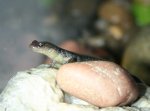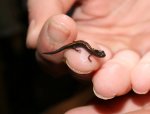Alright so let's see if we can get you all set up here. First off let's get the tank figured out then we'll worry about cleaning. The best thing I can tell you to use as a substrate (dirt substitute) is coco fiber, commonly sold as bed-a-beast. I make it about an inch or two deep then I cover it with a nice layer of leaves. You could put in a few rocks or bark pieces as well for added hides. Now you could pretty much leave it like this and the redbacks would be just happy. If you want to get a little more natural looking with it, then you could add some pothos, moss, philendron, and/or a few ferns. Now for cleaning, with this setup there is not much cleaning to be done actually. Redbacks don't tend to be very messy at all, besides removing any uneaten food or noticeable feces you shouldn't have to do any major cleaning for about 3 or more months. Just remember to keep the substrate moist (not soaked) and you will have a pretty easily maintainable setup.
Hope this helps without confusing you.
EDIT: Sorry but it looks like Jennewt beat me to it whilewas typing my reply so most of this is just what she said.



